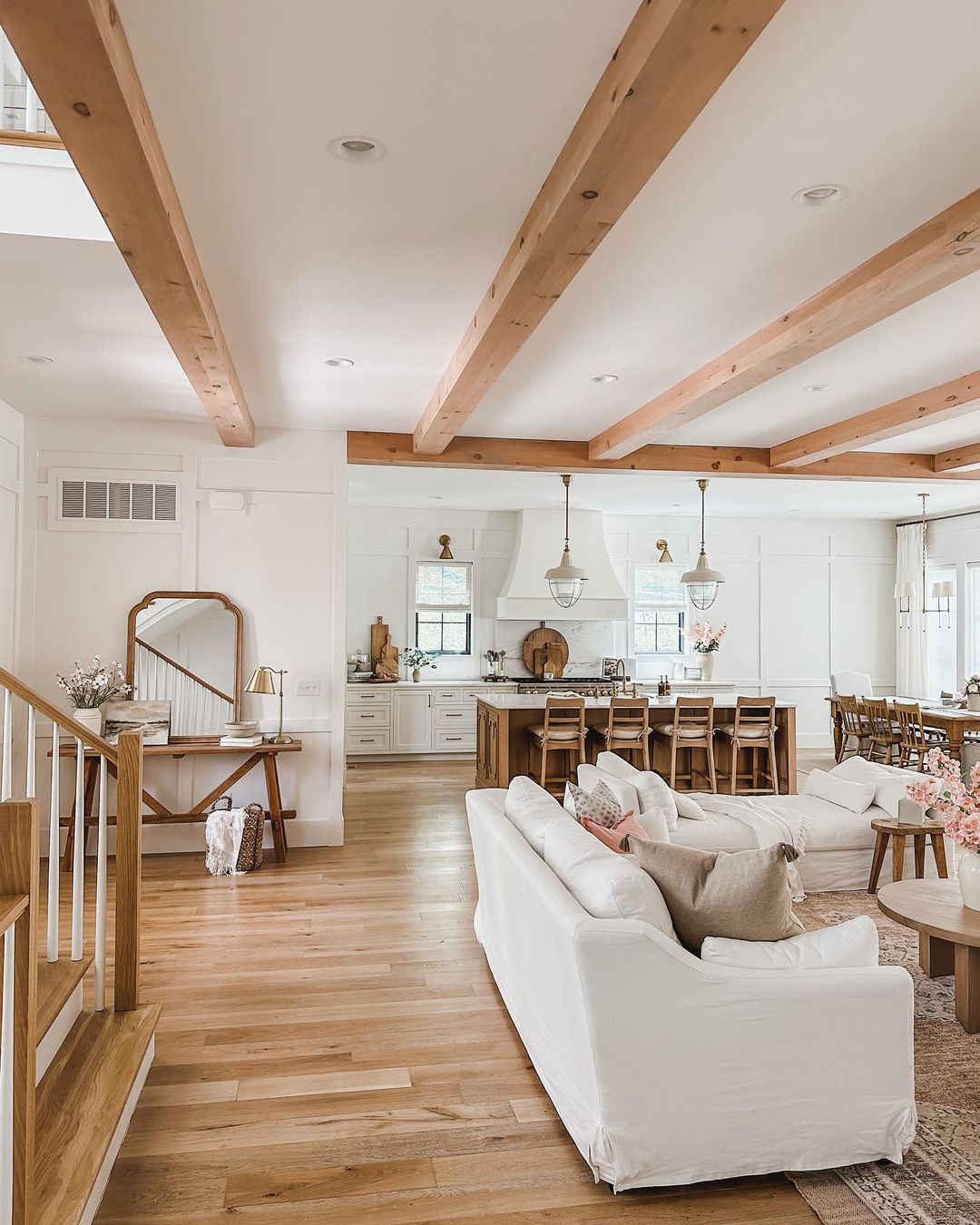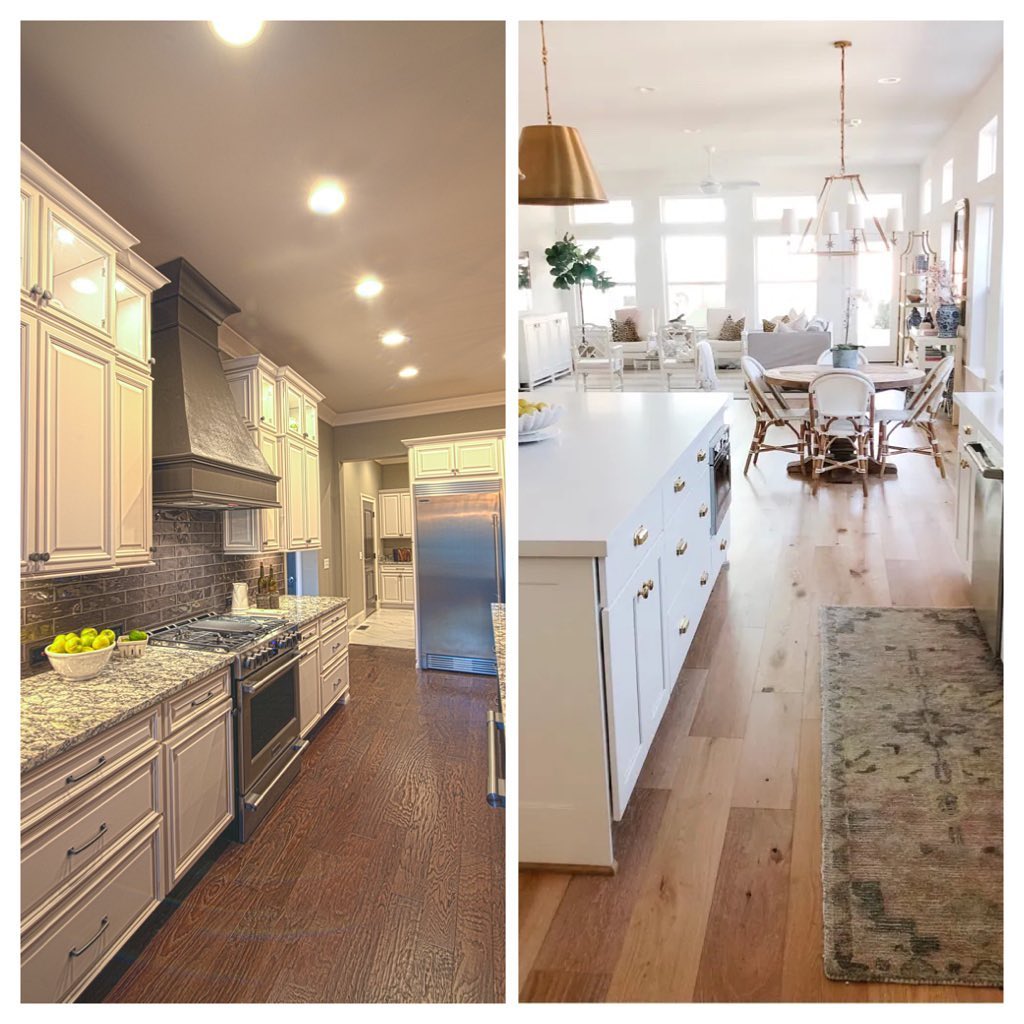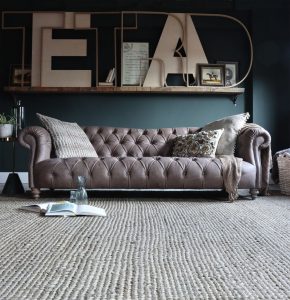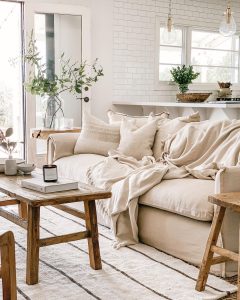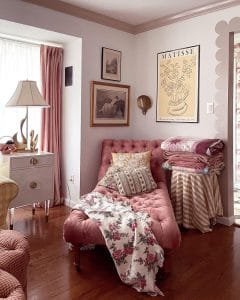Welcome to a personal journey of contemplation, where we embark on the quest to unravel the age-old question; Which Interior Design Plan Is Better—Open Layout or Closed Layout?
As you embark on this exploration, consider the interplay of open and closed layouts, two design philosophies that resonate with the rhythms of modern living. This blog post is your guide – a compass to navigate the world of interior design, tailored to your unique aspirations and desires.
In this article, we delve deep into the essence of open layouts, those sprawling canvases that seamlessly merge spaces, fostering connection and togetherness. We also unlock the doors to closed layouts, where rooms unveil their distinct personalities, inviting you to create intimate sanctuaries that celebrate your individuality. But beyond the surface, we journey into the art of integration, where the magic of both layouts can intertwine to craft a haven that harmoniously balances communal engagement and personal retreat.
As you read on, imagine your home not just as bricks and mortar, but as a living expression of your dreams and stories. Whether you’re seeking the perfect ambiance for social gatherings, a quiet cocoon for reflection, or a dance between both, this blog post is your companion. It’s a toolkit brimming with insights, considerations, and creative sparks that ignite the canvas of your design journey.
Whether you’re new to interior design or a seasoned aficionado, our aim is to empower you with knowledge and inspiration. You’ll discover how each layout reflects your family dynamics, work routines, and aspirations. Through the lens of aesthetics and functionality, you’ll see how your choices can shape the way you live, connect, and find solace within your abode.
So, whether you’re envisioning an open expanse that beckons laughter and conversations or yearning for closed sanctuaries that embrace serenity, this blog post is your compass. It’s designed to help you make informed decisions that resonate with your heart’s desires.
Let’s get started!
Which Interior Design Plan Is Better: Open Layout or Closed Layout?
Defining Open and Closed Interior Layouts
An open layout isn’t merely about arranging furniture; it’s a profound transformation of space. It’s like removing the walls that separate your family’s activities, allowing energy and conversations to flow effortlessly. This design philosophy seeks to create a symphony of connection by merging vital spaces like the kitchen, dining area, and living room into a harmonious ensemble. In an open layout, you can prepare a meal while staying engaged in conversations, host gatherings that seamlessly transition from cooking to dining, and enjoy a sense of togetherness that transcends physical barriers.
On the flip side, a closed layout cherishes the art of distinct spaces. It embraces walls as collaborators, orchestrating a symphony of privacy and purpose. Each room becomes a well-defined stage, tailored to specific activities and moods. The living room whispers relaxation, the kitchen hums with culinary creativity, and the bedrooms cocoon you in tranquility. Closed layouts offer intimate settings where you can immerse yourself in a book without distractions, conduct focused work, or simply relish moments of solitude. These well-defined zones not only cater to different functions but also offer a unique palette for design and décor expressions, turning each room into a canvas for individuality.
Choosing between these layouts isn’t just about aesthetics; it’s about crafting the rhythm of your home. An open layout beckons conversations and shared experiences, while a closed layout offers retreats and moments of introspection.
Exploring the Advantages and Drawbacks of Open Interior Layouts
Open layouts have earned their spotlight in modern design due to their transformative qualities that resonate with the way we live today. They are a celebration of light, space, and connectivity, but like any design choice, they come with their own set of benefits and considerations.
The Pros
Open layouts shine as natural light’s playground. By removing walls, they invite sunlight to pirouette freely, casting a warm glow that paints your interior with a sense of airiness and vitality. This infusion of natural light doesn’t just illuminate the rooms; it illuminates moods, lifting spirits and breathing life into your space.
The magic of open layouts extends to perception, where they craft an illusion of generous space. Rooms seemingly expand beyond their physical boundaries, inviting you to embrace a sense of grandeur even in modest areas. The result? An interior that feels limitless, uninhibited, and distinctly inviting.
Flow is where open layouts excel. The unhindered movement from one area to another ignites an easy rhythm to daily life. Imagine seamlessly transitioning from preparing a meal in the kitchen to hosting guests in the living room, without missing a beat. Open layouts encourage a dance of interaction and shared experiences, nurturing the bonds that make a house a home.
Entertaining becomes a joyous affair in open layouts. Whether it’s an intimate dinner or a bustling party, the seamless flow allows conversations and laughter to unfurl throughout the space. You can be the ultimate host while effortlessly tending to culinary creations, ensuring your guests feel right at home.
The Cons
However, open layouts come with a caveat—privacy. While they are excellent for fostering togetherness, finding a moment of solitude can be a challenge. If you’re yearning for a quiet reading nook or a space to concentrate, consider how an open layout might impact your ability to retreat into your thoughts.
Acoustics play a pivotal role in open layouts. With fewer walls to absorb sound, conversations, footsteps, and even kitchen clatters might reverberate across the space. This is where strategic planning comes in. Rugs, curtains, and acoustic panels can act as allies, softening sound and creating a more harmonious auditory environment.
Striking a balance between openness and intimacy can be a delicate task. While open layouts embrace communal living, they might not be as conducive to fostering individual spaces for different activities. Ensuring each activity retains its distinct aura while being part of a seamless whole demands thoughtful arrangement and design.
Weighing the Pros and Cons of Closed Interior Layouts
Amid the tapestry of design possibilities, closed layouts stand as cozy havens that wrap you in an embrace of purposeful spaces. They offer a world of intimacy and seclusion, where each room becomes a sanctuary with its own narrative to share. But, as with any design choice, closed layouts bear their virtues and considerations.
The Pros
Closed layouts cultivate intimacy and a sense of belonging. Each room steps forward with its distinct aura, forging an emotional connection with its purpose. The living room whispers relaxation, the kitchen hums with culinary inspiration, and bedrooms cocoon you in tranquility. This intentional demarcation of space allows for a deeper exploration of specific activities, enhancing the emotional resonance of each.
Creativity thrives within closed layouts, as each space can be tailored to cater to your preferences and needs. Whether it’s transforming a corner into an artist’s nook, a study for focused work, or a meditation room for quiet reflection, closed layouts provide a canvas where you can indulge in the nuances of personalization.
A closed layout resonates with those who relish quiet moments. If you’re a reader seeking a cozy nook, a writer in pursuit of uninterrupted inspiration, or simply someone who treasures solitude, a closed layout offers the privacy to immerse yourself in your passions without distractions.
The Cons
Yet, the embrace of closed layouts sometimes carries a subtle constraint. While they nurture solitary endeavors, their confined nature might not be conducive to expansive socializing. Hosting large gatherings or parties might call for inventive spatial rearrangements to accommodate a crowd comfortably.
The intimacy of closed layouts can occasionally tip into confinement, especially if not thoughtfully designed. The challenge lies in maintaining the balance between coziness and clutter. Ensuring each room remains functional without feeling cramped demands a judicious approach to organization and design.
Closed layouts, while offering nooks of retreat, can sometimes limit the openness that fosters spontaneous interactions. If you value effortless flow between spaces and the ability to keep an eye on various activities, a closed layout might pose logistical challenges.
As you contemplate the world of closed layouts, envision the scenes you wish to curate within their walls. Closed layouts excel in creating personal sanctuaries, but they invite you to carefully orchestrate spaces that maintain a harmonious balance between intimacy and connection.
Key Factors to Consider When Choosing Between Open and Closed Interior Layouts
Before you embark on the journey of shaping your interior space, take a moment to pause and reflect. The decision between an open layout and a closed layout isn’t just about aesthetics; it’s about crafting an environment that resonates with your lifestyle, family dynamics, and the unique cadence of your everyday life.
- Lifestyle Harmony – Your lifestyle is the heartbeat that reverberates through your home. Are you an extrovert who thrives on hosting vibrant gatherings? Open layouts embrace the synergy of social interactions, making them ideal canvases for parties that flow seamlessly from kitchen to living room. On the other hand, if you find solace in quiet evenings with a book or pursuing hobbies, a closed layout might cocoon you in serene spaces where relaxation reigns supreme.
- Family Dynamics – Family dynamics play a symphonic role in the design decision. If you’re a family that revels in shared activities and conversations, an open layout invites communal engagement. Picture conversations flowing from the dining area to the living room while meals simmer on the stove. But if your family members seek pockets of privacy, closed layouts offer the gift of personalized spaces. Your teenager engrossed in studies, a parent focused on a project—each can have their own cocoon of concentration.
- Spatial Constraints – Embrace the reality of your space, for it’s the canvas upon which you paint your interior story. If you’re working with a cozy apartment or a compact home, open layouts can amplify the sense of space, making every inch feel more expansive. However, larger spaces provide the canvas for closed layouts to shine, allowing you to carve out distinct zones that celebrate their individual essence.
- Aesthetic Expression – Consider the visual poetry you wish your home to recite. Open layouts embrace a harmonious continuum, where one space flows into another with fluid grace. This style is perfect if you adore minimalism and crave an unobstructed visual journey. Conversely, closed layouts let you craft distinct vignettes, each space a chapter in your design narrative. If you relish the idea of curating individual atmospheres, a closed layout offers the framework.
- Future Adaptability – As you reflect on your choice, ponder its longevity. How adaptable is your chosen layout to your evolving needs? Open layouts provide the flexibility to transform spaces as your family grows or your lifestyle changes. Closed layouts, while defined, might require more significant modifications to cater to shifts in dynamics.
Navigating the Flow and Functionality of Open and Closed Interior Layouts
Imagine your home as a choreographed dance, where every step is orchestrated with purpose and grace. The layout you choose sets the stage for this dance, dictating how your space flows and functions. Whether you seek a dynamic family hub or a haven for focused endeavors, the layout has a profound impact on the rhythm of your daily life.
The Open Layout
An open layout is like a river that meanders through your home, connecting spaces with a seamless current. It crafts an effortless transition between areas, making movement a pleasure rather than a chore. From the kitchen to the dining area, to the living room, the journey is smooth and unhindered. This flow is a gift for families with active dynamics, where interactions, conversations, and shared experiences become a natural part of life’s choreography.
The open layout invites you to be present in the moment, effortlessly shifting between activities without missing a beat. Cooking a meal while keeping an eye on homework progress, entertaining guests while preparing hors d’oeuvres—these scenarios are seamlessly woven into the fabric of an open layout’s design philosophy.
The Closed Layout
In contrast, a closed layout composes distinct spaces, each a tableau with its ambiance and purpose. These divisions curate a sense of separation, offering havens for focused activities that require your undivided attention. If your evenings are filled with reading, contemplation, or work that demands concentration, a closed layout can provide the quietude you seek.
Closed layouts embrace the notion of uninterrupted endeavors, where each room is tailored to its specific function. Picture a home office that immerses you in productivity, a cozy den for leisurely reading, or a creative studio that’s a sanctuary for artistic pursuits. These individual pockets of purpose thrive within a closed layout’s symphony of function.
Choosing Your Rhythm: As you contemplate the layout that aligns with your life’s rhythm, consider the dominant cadence of activities in your home. Are your days filled with bustling interactions and shared experiences? An open layout can amplify these interactions, creating a space where your family’s collective energy shines. On the other hand, if you seek an environment where focused work, hobbies, or leisure reign supreme, a closed layout provides the canvas for uninterrupted excellence.
Ultimately, the choice between open and closed layouts invites you to ponder how you want your home’s dance to unfold.
Do you envision a dynamic choreography that seamlessly melds activities and conversations? Or do you desire an atmosphere where spaces cocoon you in focused engagement?
By reflecting on your family’s rhythms and activities, you’ll find the layout that transforms your home into the stage where life’s most beautiful routines play out.
Unveiling Aesthetic and Design Flexibility in Open and Closed Interior Layouts
Your home’s design is a reflection of your personality, tastes, and the stories you hold dear. The choice between an open layout and a closed layout isn’t just about functional aspects; it’s a canvas for aesthetic expression that transforms your interior into a visual symphony. As you contemplate your design journey, envision how each layout resonates with your style sensibilities.
The Open Layout
An open layout is like a painter’s palette, where the brushstrokes of your design choices sweep across a continuous canvas. It offers the power of unity and expansiveness, visually connecting spaces into a seamless panorama. This cohesion creates a sense of airiness, a feeling that the rooms extend far beyond their physical boundaries. The result is a home that welcomes you with open arms, enveloping you in its vastness.
The versatility of an open layout is a treasure trove for design aficionados. Whether your heart flutters for contemporary chic, rustic warmth, or minimalistic serenity, an open layout becomes a versatile backdrop that accommodates a diverse range of styles. From sleek lines and modern furnishings to cozy textures and natural materials, an open layout adapts, chameleon-like, to your evolving design aspirations.
The Closed Layout
Closed layouts, on the other hand, offer a different enchantment—a chance to craft a collection of distinct atmospheres, each room a microcosm of its own narrative. With defined spaces, you have the opportunity to play with individual themes, moods, and aesthetics. Each room is a story waiting to be told, where design elements can be tailored to enhance the intended ambiance.
Imagine a closed layout that transforms a living room into a realm of elegance, a dining area into a haven of nostalgia, and a bedroom into a cocoon of serenity. Each space becomes a chapter, a piece of your design puzzle that when combined, creates a symphony of varied moods and emotions. The canvas may be defined, but within those boundaries, your creativity is boundless.
Design Harmony: As you envision your home’s aesthetic journey, consider how each layout aligns with your design vision. Are you drawn to the idea of spaces seamlessly merging, creating a canvas for design continuity? An open layout can breathe life into your design dreams, allowing you to craft a unified narrative that transcends room boundaries. If you’re enchanted by the notion of curating distinct worlds within your home, a closed layout invites you to wield your design brush with precision, infusing each space with its unique personality.
Balancing Social Interaction and Privacy within Open and Closed Interior Layouts
Your home is not just a physical space; it’s the backdrop to the stories, conversations, and connections that unfold within its walls. The layout you choose shapes the dynamics of social interaction and privacy, impacting how you engage with loved ones and find moments of solitude. As you embark on this design journey, consider how each layout aligns with your social rhythms.
Open Layout: An open layout is like an embrace that draws people together, inviting them to share conversations and experiences. It’s the heart of togetherness, where interactions flow freely from one area to another. Picture laughter spilling from the kitchen into the living room, creating a symphony of camaraderie. An open layout is a haven for social butterflies, encouraging a sense of community that effortlessly extends beyond physical barriers.
However, even in the embrace of openness, the need for privacy can arise. Conversations that demand discretion or moments of introspection might require a space to retreat to. Balancing social interaction with personal space is essential in an open layout, ensuring that the harmonious buzz of togetherness coexists with moments of quiet reflection.
Closed Layout: Closed layouts whisper an invitation to intimate gatherings and individual retreats. They offer distinct spaces where conversations are cocooned, each room a haven for focused interactions. In a closed layout, you can savor intimate dinner conversations, enjoy a leisurely reading session without distractions, or delve into deep discussions in a space where the world outside is gently shut out.
Yet, there’s a delicate balance to strike. While the closed layout excels in fostering pockets of solitude, it might not be as conducive to expansive socializing. Gatherings might feel disjointed as conversations become confined to individual rooms. As you contemplate a closed layout, ponder how you can craft a layout that nurtures both the intimacy of individual spaces and the sense of community that unites them.
Harmonizing Social and Solitude: When choosing between these layouts, consider your family’s social dynamics and the balance you aspire to strike between communal engagement and personal retreat. Do you revel in gatherings that cascade from one space to another? An open layout might serve as your stage. On the other hand, if you cherish the sanctity of focused conversations and intimate moments, a closed layout offers the backdrop for these cherished connections.
Whichever layout resonates, remember that it’s not an either-or choice; it’s about achieving harmony.
The Art of Integrating Open and Closed Layouts for a Harmonious Interior
Unlock the doors of your imagination, for within lies a design secret that can harmoniously blend the charms of open and closed layouts. Here’s the enchanting truth: you don’t have to commit to a single layout. Instead, you can embark on a journey of creativity and customization that weaves together the best of both worlds—a hybrid layout that caters to the multifaceted tapestry of your life.
Crafting a Symphony of Spaces: Imagine stepping into a home where each room whispers a distinct narrative, where communal harmony and personal retreat coexist in a beautifully choreographed dance. The heart of your home—the kitchen and living area—can unfold as an open expanse, an arena of shared laughter and heartfelt conversations. The seamless flow facilitates socializing, allowing you to host gatherings that transition effortlessly from cooking to dining and lounging.
Yet, as you journey deeper into your home, closed doors lead to private sanctuaries—bedrooms, studies, and dens—where solitude and introspection reign. A closed layout for these spaces creates the perfect cocoon for unwinding, focused work, or simply reveling in your thoughts without distraction. Each room becomes a haven, offering a retreat that nurtures your spirit and allows you to recharge.
Designing Your Hybrid Haven: The key to a successful hybrid layout lies in your creativity and vision. Consider the dynamics of your family life. Do you treasure communal breakfasts, lively dinner parties, or family game nights? An open kitchen-living area could be your vivacious social hub. Simultaneously, for moments of solitude, such as reading, pursuing hobbies, or simply basking in quietude, closed spaces can provide the shelter you seek.
Visualize a seamless transition as you move from open spaces to closed sanctuaries. Think about how your home’s flow can embrace the diverse experiences and emotions of daily life. Experiment with design elements that create harmony while allowing each room to maintain its unique identity.
The Art of Balance: Balancing open and closed layouts within your home is a pursuit of equilibrium—a quest to harmonize the melodies of social interaction and personal solace. The result is a home that is not confined to a single ethos but unfolds as a multifaceted reflection of your desires and needs.
As you embark on this adventure, remember that there’s no right or wrong way to integrate both layouts. Let your lifestyle, aspirations, and the ebb and flow of your daily routine guide you.
Equipping Your Decision-Making Toolkit for Choosing the Ideal Interior Layout
As you stand at the crossroads of design decision, armed with aspirations and choices, let’s equip you with a toolkit that transforms your contemplation into clarity. This guide is your compass, helping you navigate the realm of layout selection by weaving practical considerations and creative inspiration.
- Family Dynamics and Size: Your family’s composition lays the foundation for your layout choice. Consider the members of your household—do you have children, elders, or furry friends? Reflect on how each layout would accommodate your family’s interactions and individual needs. An open layout might nurture collective gatherings, while a closed layout can provide personal retreats.
- Entertaining Habits: If your weekends are often adorned with laughter and the aroma of delicious meals, an open layout might be the stage for your hospitality. Visualize guests flowing seamlessly from the kitchen to the living room, sharing stories and creating memories. Conversely, if you value intimate gatherings or focused conversations, a closed layout might offer the ambiance you seek.
- Work and Lifestyle: Your work dynamics and daily activities influence your layout preference. Are you someone who thrives on focused work or creative pursuits? A closed layout could provide the solitude you need. On the other hand, if your work involves multitasking or keeping an eye on children while cooking, an open layout aligns with your rhythm.
- Priorities and Aspirations: List your priorities as if you were jotting down ingredients for a cherished recipe. Do you prioritize an expansive space that encourages social interactions? Is the coziness of distinct atmospheres your top priority? By identifying your priorities, you pave the way for a layout that aligns with your heart’s desires.
- Design Inspiration Journey: Embark on a virtual journey through design inspiration. Explore websites, magazines, and social media platforms to witness the magic of both open and closed layouts come to life. Observe how they can be executed beautifully, capturing different design styles and aesthetics. Visualize how each layout resonates with your taste and vision.
- Customization Exploration: Imagine yourself as a designer, shaping your space to harmonize with your lifestyle. Sketch out scenarios, from lively gatherings to moments of solitary reflection. Consider how each layout can be customized to accommodate your family’s rhythms and activities. Your customization journey adds a personal touch to your decision.
Conclusion
Ultimately, the decision between an open layout and a closed layout is a personal one, shaped by your desires and needs. Both layouts offer distinctive advantages and trade-offs. The key is to align your choice with the lifestyle you envision in your home.
By reflecting on your family’s dynamics, priorities, and aspirations, you’re breathing life into your space. The open layout becomes an invitation to shared moments, where conversations flow effortlessly and communal bonds are forged. The closed layout unveils sanctuaries, cocooning you in solitude and offering personalized retreats.
In the realm of interior design, there’s no one-size-fits-all answer. The beauty lies in the harmony you find – whether it’s a symphony of open spaces that welcome connection or the poetic dance of closed rooms that celebrate individuality. With your toolkit in hand, enriched by exploration and imagination, you’re poised to embark on a design journey that’s uniquely yours.
As you blend the practical and the creative, the functional and the aesthetic, remember that your home’s layout isn’t a fixed choice; it’s a canvas that evolves with you. The final masterpiece is a reflection of your family’s laughter, your quiet contemplation, and the cherished interactions that unfold within its walls. Whether you choose open, closed, or a harmonious blend of both, your home becomes the stage for life’s most beautiful stories – stories that resonate with every rhythm of your heart.
Happy designing!
Related Posts:

